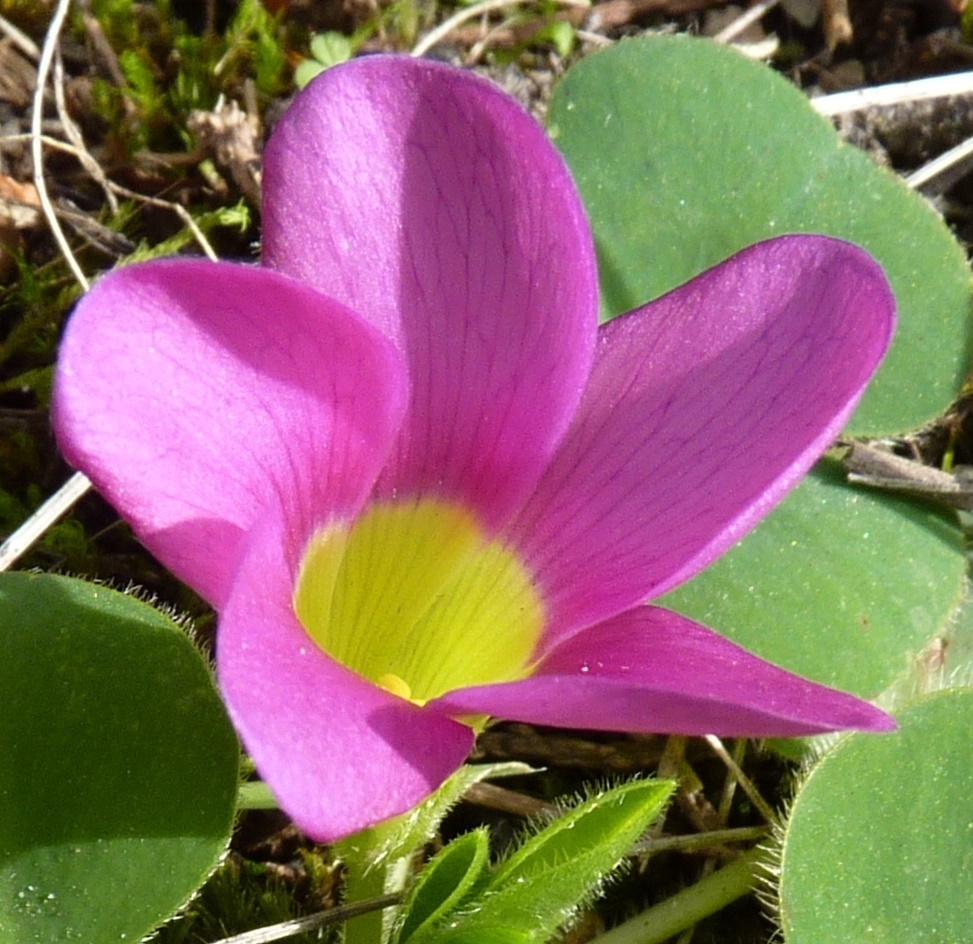Oxalis purpurea
L. Large-flower Wood-sorrelHerb with stems hardly exserted; bulbs ovoid, 1–3 cm long, pointed, tunics blackish-brown, rigid, gummy; bulbils formed on rhizome. Leaves crowded at apex of rhizome, 3-foliolate; leaflets sessile, broad-obovate to rhombic, 5–45 mm long, 5–50 mm wide, rounded or sometimes emarginate, green and glabrous above, often purplish below with many translucent dots and streaks that dry black, pubescent or with hairs confined to nerves, margins ciliate; petioles 1–17 cm long, usually densely villous; stipules membranous, to c. 4 mm long, abruptly tapering into petiole. Inflorescences basal, 1-flowered; peduncles shorter than or scarcely exceeding leaves, usually pilose. Sepals lanceolate, 5–8 mm long, striate with translucent lines, ciliate, calli absent. Petals 10–40 mm long, pink to purple or sometimes white, yellow at base. Capsules not developed in Australia. Flowers mainly Apr.–Nov.
Wim, GleP, VVP, VRiv, GipP, OtP, WaP, Gold, CVU, GGr, DunT, NIS, HSF, HNF, OtR, Strz. Also naturalised WA, SA, Qld, NSW, Tas. Native to South Africa. Often grown as an ornamental, but now a weed of gardens, roadsides, cemeteries and other disturbed areas, as well as some native vegetation such as Themeda triandra plains grassland.
Conn, B.J.; Jeanes, J.A.; Richards, P.G. (1999). Oxalidaceae. In: Walsh, N.G.; Entwisle, T.J., Flora of Victoria Vol. 4, Cornaceae to Asteraceae, pp. 207–218. Inkata Press, Melbourne.
 Spinning
Spinning




